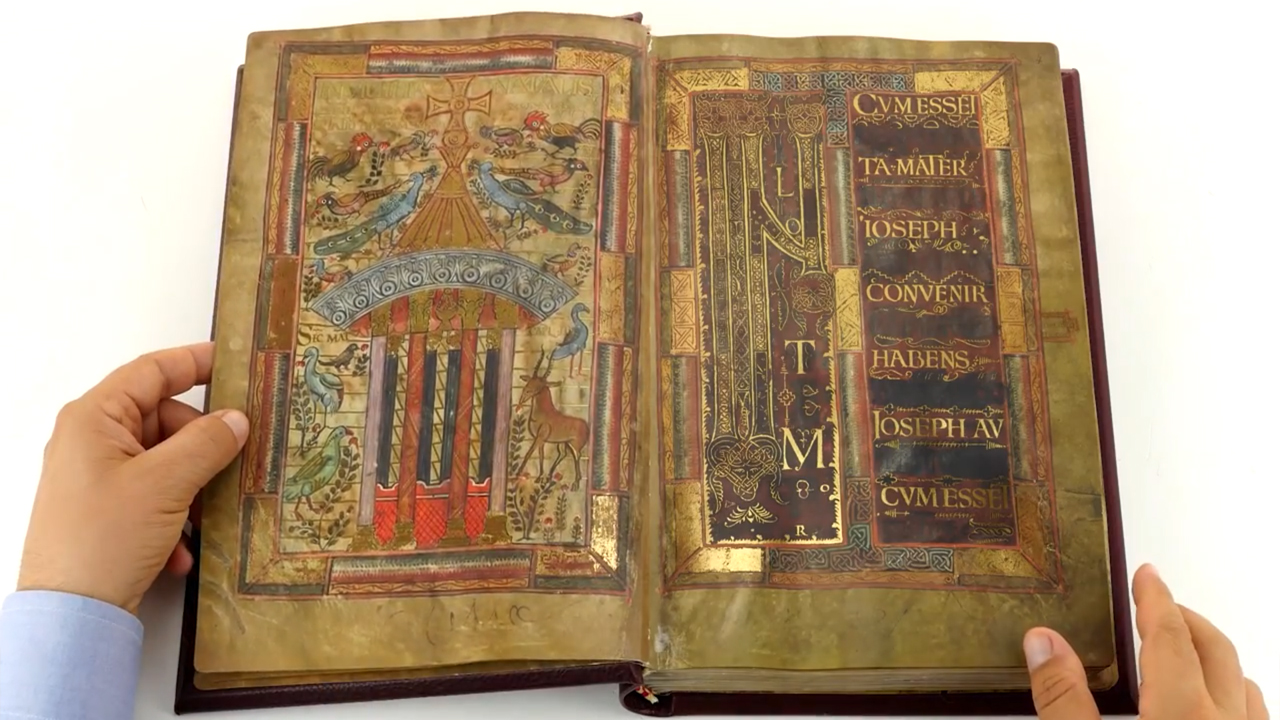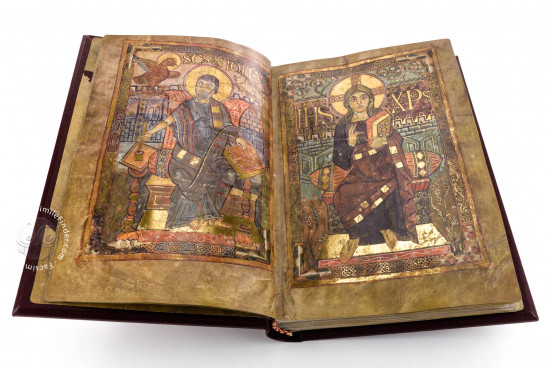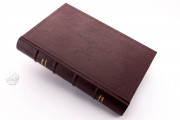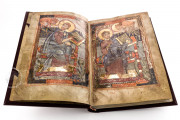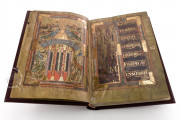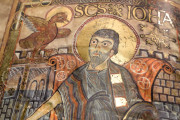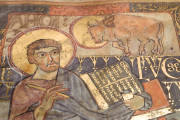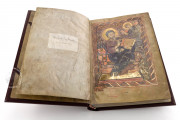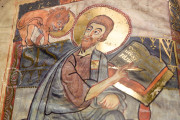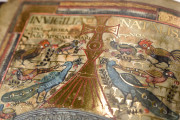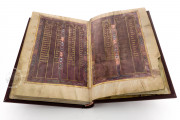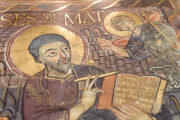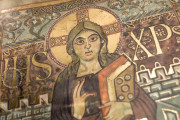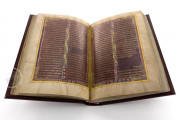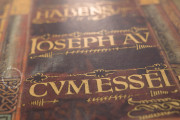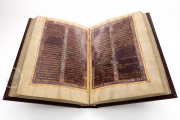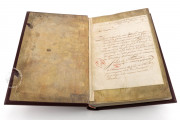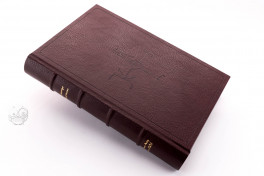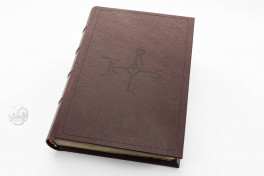The Godescalc Evangelistary is one of the most ambitious works of art produced at the peripatetic court of Charlemagne, the eventual ruler of an empire that embraced most of Western Europe. Created between 781 and 783 and named for its scribe, the manuscript set the highest standards for book production in the Carolingian period. It is a deluxe Christian liturgical book of Gospel readings for use at mass. It opens with six full-page miniatures, the work of two illuminators, that establish the sumptuousness that governs the presentation throughout the book.
The frontispiece miniatures reveal the keen interest in classical antiquity that was a hallmark of Carolingian art. The book's text is presented in gold and silver on nearly 250 text pages painted deep purple with painted frames of interlace and geometric designs.
Opening Splendor
The book opens with portraits of the evangelists—the authors of the Gospel accounts of the life of Christ: first Saint Matthew (fol. 1r), then Saints Mark and Luke on facing pages (fols. 1v-2r), and finally Saint John facing an image of Christ enthroned in majesty (fols. 2v-3r). The suite concludes with the Fountain of Life, an image based on Genesis and the Psalms and understood to signify the harmony of the Gospels (fol. 3v).
The four evangelists, all seated on cushioned thrones or benches and engaged in writing their Gospels, look up to their symbols—the winged man, lion, calf, and eagle—seeming to draw inspiration for their works from the divine. The presentation is lavish: the evangelists and their symbols have enormous gold haloes, and the furniture, textiles, and backgrounds feature rich jewel-like colors.
Consistent Sumptuousness
The manuscript's text is written in gold, with headings in (now blackened) silver, all in majestic Uncial script, a majuscule script revived by Carolingian scribes from late antiquity. An exuberant IN monogram with intricate interlace patterns introduces the first text, the Gospel reading for Christmas Eve (fol. 4r). Another decorative accent comes at Palm Sunday: the image of a bird entwined in a spiraling vine and nibbling on its fruit is rendered in fine gold lines on the purple painted ground (fol. 48r).
Made for a Royal Couple
The manuscript was created at the behest of Charlemagne (742-814), at the time king of the Franks, and his wife Hildegard (d. 783), perhaps to commemorate their voyage to Rome in 871 for the baptism of their son by the pope. Its purple pages and writing in precious metals suit its destiny as a manuscript in the library of the royal couple.
The book's expert scribe, Godescalc, reveals his name in the dedicatory inscription, which he wrote in Caroline Minuscule, the new script that would come to dominate the writing of books in the Carolingian realm for centuries.
A French National Treasure
The codex was in the sacristy of the abbey (later collegiate) church of Saint-Sernin in Toulouse by the mid-thirteenth century. In 1793, it was donated on behalf of the city of Toulouse to Napoléon I (1769-1821). It later found its home in the Musée des Souverains (1852-1872) before entering the Bibliothèque nationale (now Bibliothèque nationale de France).
We have 2 facsimiles of the manuscript "Godescalc Evangelistary":
- Godescalc Evangelistary - library edition facsimile edition published by Facsimile Finder, 2015
- Godescalc-Evangelistar facsimile edition published by Faksimile Verlag, 2011

